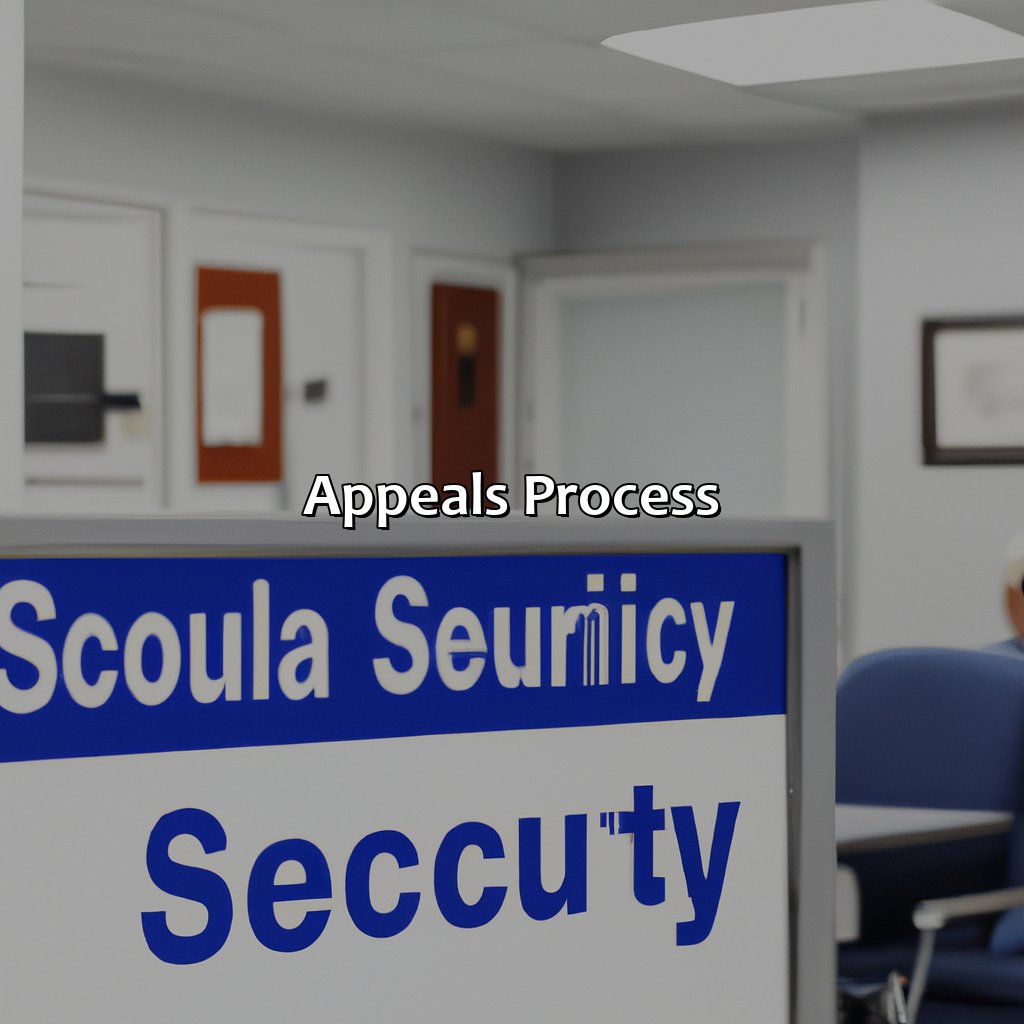How To File A Social Security Disability Claim?
Key Takeaways:
- Understand the Social Security Disability claim process: Before filing a claim, it’s important to have a clear understanding of the criteria and process involved. This will help you prepare and increase your chances of success.
- Meet the Eligibility criteria: There are two main eligibility criteria for Social Security Disability – medical and work-related. To qualify, you must have a medical condition that makes it impossible for you to work and have worked long enough to earn sufficient credits.
- Filing a Social Security Disability Claim: The process involves gathering documents, applying online or in person, and waiting for confirmation. It’s important to submit all relevant documents and information to avoid delays or mistakes in the verification process.
- Appeals Process: If your claim gets denied, there is a four-stage appeals process – reconsideration, administrative law judge hearing, appeals council review, and federal court review. Each stage involves specific steps and deadlines and requires careful preparation and documentation.
Are you stuck in unemployment due to your disability? Unfamiliar with the process of filing a social security disability claim? Don’t worry, we have you covered. In this article, you will learn how to file a successful social security disability claim in no time.
Understanding Social Security Disability Claim
Understanding How to File a Social Security Disability Claim
Filing a social security disability claim can be a daunting task for anyone. Many people struggle to understand the process and the necessary steps to take. To begin, you will need to gather all medical records, employment history, and income information. From there, you can complete the application and submit it to the Social Security Administration.
It is important to note that the application process can take several months or even years to complete. You may also be asked to attend a hearing with a judge to further discuss your claim. It is crucial to have all necessary documents and evidence prepared beforehand to ensure a smooth process.
When submitting your claim, it is highly recommended to seek the assistance of a social security disability lawyer. These professionals have expertise in navigating through the application process and can help ensure that your application is as strong as possible.
In order to increase your chances of success, it is important to follow up on your claim regularly. Keep track of important deadlines and communicate regularly with the Social Security Administration. Don’t hesitate to reach out to a disability lawyer if you have any questions or concerns.
Don’t let the fear of filing a social security disability claim deter you from seeking the assistance that you need. With proper preparation and assistance, you can successfully file your claim and receive the benefits that you are entitled to.

Image credits: retiregenz.com by James Arnold
Eligibility Criteria
To be eligible for social security disability benefits, you need to understand the medical and work requirements. Meet the medical and legal criteria to increase your chances of being accepted. Gain insight into the medical and work requirement sub-sections. This will help you make a strong case when filing a social security disability claim.

Image credits: retiregenz.com by David Washington
Medical Requirements
Individuals who wish to file a social security disability claim need to meet specific medical requirements. These requirements are designed to ensure that only those with severe and long-lasting medical conditions receive benefits. Generally, individuals must have a medical condition that has lasted or is expected to last for at least 12 months and limits their ability to work. The condition must also be severe enough that it prevents the individual from doing any type of substantial gainful activity.
Furthermore, the medical condition must be listed in the Social Security Administration’s Listing of Impairments or prove equivalent in severity. If the condition is not listed, individuals can still apply, but they will need to provide extensive medical evidence supporting their claim. Medical evidence includes doctors’ reports, hospital records, medication lists, test results and other information about diagnosis and treatment.
It is important to note that meeting the medical criteria alone does not guarantee eligibility for benefits. Applicants must also meet technical qualifications such as having paid enough taxes into the system and having worked long enough to qualify for benefits.
In one instance, a man applied for disability due to severe lower back pain after working as a construction worker for many years. Despite meeting the medical criteria, his initial application was denied, but he was eventually awarded benefits after applying again with additional evidence and obtaining legal representation.
No job, no problem. Just make sure your doctor confirms that you’re not fit to work and boom, you’re eligible for social security disability benefits.
Work Requirement
To qualify for social security disability, you must meet the Work Credits Requirement. This means you must have worked long enough and recently enough under Social Security to be eligible for disability benefits. The number of work credits required will depend on your age when you become disabled.
Having a certain number of work credits is the first qualification hurdle in receiving disability benefits. The amount of work credits needed to qualify depends on your age and the length of time that has passed since you were last earning a steady income. For example, a younger person may need fewer credits than an older person who has been out of work longer.
It’s important to note that work credit does not correlate with income earned or the severity of one’s medical condition. It is instead intended as a means to ensure that only those who have been making contributions over time receive social security disability benefits.
Meeting the Work Credits Requirement can be challenging, but it’s not impossible. Let’s take the instance of Mike, a construction worker in his mid-30s who suffered severe injuries on the job. Despite having only 25 work credits applying for disability benefits, his appeal was granted following his hospitalization through evidence proving he could no longer continue working in construction due to the injuries sustained at work.
Disability claim forms are like homework assignments – tedious, confusing, and you’d rather avoid them at all costs.
Filing a Social Security Disability Claim
Want to file for social security disability? You have 3 ways. Gather documents, apply online, or apply in person. Each has advantages, so it’s good to learn the differences. Here’s a breakdown to make your choice easier.

Image credits: retiregenz.com by James Woodhock
Gathering Document
Collecting Required Documents
The Social Security Disability claim requires several important documents to process and approve the application. Here is a list of documents that needs to be collected:
- Medical records
- Birth certificate
- Work history
- Tax returns from the past year
Failure to assemble all necessary paperwork could result in a denial of disability benefits.
To ensure a smooth and speedy process, create a table with columns for each required document and its corresponding file details like folder location or contact information of the practitioner at the Department of Health. Such tables help streamline your record-keeping system and ease the process of filing any supplemental documents.
It is essential to note that some additional documents may be deemed necessary while processing the claim. Therefore make sure you submit updated physical medications or recent therapy reports if there are changes since your initial application.
According to SSA, 53% of SSDI claims are turned down during their initial steps due to inadequate paperwork submission.
Applying online for disability benefits: Because filling out physical paperwork is so 20th century.
Applying Online
To file for Social Security Disability, one method is to submit an application online. This process can be straightforward and convenient for those who prefer digital channels.
Here’s a 5-step guide on how to apply online for Social Security Disability:
- Visit the Social Security Administration’s website.
- Create an account or sign in to your existing account.
- Complete the disability application form with accurate and comprehensive information about your medical condition and work history.
- Upload supporting documents such as medical records or employment records, if available.
- Submit the application and await confirmation of receipt.
It’s worth noting that not all applications can be completed online. If you are applying for Supplemental Security Income, you must call the SSA to schedule a phone appointment.
Pro Tip: Double-check all information before submitting your online application, as errors can delay processing times.
Brace yourself for the joyous experience of waiting in line for hours with strangers who also want to prove they’re disabled.
Applying In Person
When it comes to filing a Social Security disability claim in person, there are a few important things to keep in mind. Applying In Person requires your physical presence at the local Social Security office.
Here’s a four-step guide to Applying In Person:
- Make an appointment by calling the Social Security Administration.
- Gather all necessary documentation related to your disability and work history.
- Complete the required forms with the help of an SSA representative if necessary.
- Submit your completed application along with all supporting documentation.
It’s important to note that each individual’s case will have its unique requirements when applying in person. For example, applicants who do not speak English may need assistance from someone who is fluent in their native language.
To ensure that your filing process goes smoothly, it is recommended that you make an appointment ahead of time. This allows the SSA representative to prepare for your visit and provide you with undivided attention.
One suggestion would be to get all necessary paperwork together before visiting the SSA office so that you can effectively communicate with the SSA representative. Keep copies of everything and bring them along with you as often times additional information may be requested or needed during this process.
Overall, while Applying In Person can feel daunting, being proactive about scheduling appointments and having all necessary documents ready can make a significant difference in streamlining the process towards receiving social security benefits for those with disabilities.
If at first you don’t succeed, appeal, appeal, appeal – the social security disability process will give you plenty of practice!
Appeals Process
Navigating the social security disability claim appeals process? Use these sub-sections for solutions:
- Reconsideration: Present your case for benefits at this step.
- Administrative Law Judge Hearing: Present your case for benefits at this step.
- Appeals Council Review: Present your case for benefits at this step.
- Federal Court Review: Present your case for benefits at this step.
Understanding the process boosts your odds of success!

Image credits: retiregenz.com by Joel Woodhock
Reconsideration
Upon being denied Social Security Disability benefits, there is an option for a ‘Request for Reconsideration.’ This process involves a new review and examination of your claim by a different examiner. To file this request, submit the necessary paperwork along with any updated medical records or evidence that may strengthen your case. It is recommended to submit new evidence to help increase the likelihood of approval.
During the reconsideration process, expect a similar timeline to that of the initial application process as it is a second round of review. The outcome may result in either approval or denial of benefits. If denied again, there are further steps you can take to appeal the decision.
Submitting new evidence during reconsideration increases the chances of being approved by up to 10%. (Source: Social Security Administration)
Why go to a judge when you can just plead your case to a Magic 8-ball? It’s about as effective and much less stressful.
Administrative Law Judge Hearing
When you file your Social Security Disability claim, it may be denied initially. If this happens, you have the option to appeal the decision. One of the steps in this process is to attend an Administrative Law Judge Hearing. During this hearing, a judge will review all of the evidence and testimony of both you and any witnesses you bring before making a decision on your case. It is important to be honest and forthcoming during this hearing, as any dishonesty or withholding of information could harm your chances of receiving benefits.
In addition to presenting evidence and testimony, the judge may also ask questions about your disability and ability to work. These questions are meant to help the judge gain a better understanding of your situation and determine if you are truly unable to work due to your disability. It is important to answer these questions truthfully and thoroughly.
It is worth noting that attending an Administrative Law Judge Hearing can be a lengthy process, with long wait times for a hearing date. However, it also gives you the opportunity to present your case in person and potentially receive benefits that can greatly improve your quality of life.
True History:
One example of a high-profile Administrative Law Judge Hearing involved former U.S. Senator Tom Coburn from Oklahoma. After being diagnosed with prostate cancer in 2014, he underwent treatment that left him unable to stand or walk without assistance. Despite his condition, his initial request for disability benefits was denied by the Social Security Administration. He appealed the decision and eventually won his case in an Administrative Law Judge Hearing in 2015.
Why go to the Appeals Council when you can just appeal to the Supreme Being? #disabledhumor
Appeals Council Review
After receiving a denial from a Social Security Administration (SSA) hearing, individuals can request an Appeals Council Review. This council consists of administrative law judges who review the hearing decision and determine if it was legally correct. If the council agrees with the hearing decision or decides not to review the case, then the individual may appeal in a federal court. It is important to note that this step in the appeals process can be time-consuming and requires detailed information to support one’s case.
It is recommended to hire an experienced disability attorney who can help gather evidence, present arguments, and navigate the legal system effectively. The appeal must be filed within 60 days of receiving the hearing decision and should include any relevant medical records or other supporting documentation.
In some cases, individuals may receive a favorable review from the Appeals Council and have their benefits approved without having to pursue further legal action. However, this outcome is rare, and many cases will still require additional steps in the appeals process.
Pro Tip: Keep copies of all documents related to your disability claim and appeal process for future reference.
Federal Court Review
The legal process to appeal a denied claim starts at the Administrative Law Judge, followed by the Appeals Council. If both fail, the Federal Court Review is the final option for further review. This process allows social security disability claimants to submit additional evidence or present errors from previous rejections.
However, this is an extensive and time-consuming undertaking that involves filing a lawsuit against the Social Security Administration (SSA) in federal court. The SSA will defend itself with its legal team and has established criteria that apply on how it handles cases through this stage.
Five Facts About “How To File A Social Security Disability Claim”:
To file a Social Security Disability claim, you must be unable to work due to a medical condition that is expected to last at least a year or result in death. (Source: SSA)
You can file a Social Security Disability claim online, by phone, or in person at your local Social Security office. (Source: SSA)
The Social Security Administration considers a variety of factors when reviewing SSD claims, including medical evidence, work history, and age. (Source: SSA)
The Social Security Disability claims process can take several months or even years, and many claims are initially denied. (Source: Nolo)
It may be helpful to hire a disability lawyer to assist with the SSD claims process. (Source: Disability Secrets)
FAQs about How To File A Social Security Disability Claim?
What is Social Security Disability and how to file a claim for it?
Social Security Disability is an insurance program designed to provide assistance to individuals who are unable to work due to a disability. To file a claim for it, you need to start by submitting an application either online, in-person, or over the phone with the Social Security Administration (SSA).
Who is eligible to file a Social Security Disability claim?
Individuals who have paid into the Social Security Disability Insurance program (SSDI) through payroll taxes for a certain number of years and have a qualifying disability that prevents them from working are eligible to file a Social Security Disability claim.
What are the benefits of filing a Social Security Disability claim?
Filing a Social Security Disability claim can provide financial assistance to individuals who are unable to work due to a disability, offering benefits such as a monthly income, access to medical treatment, and vocational rehabilitation services.
How long does it take to receive a decision on a Social Security Disability claim?
The length of time it takes to receive a decision on a Social Security Disability claim can vary depending on a variety of factors, including the complexity of the claim and the workload of the SSA office processing the claim. On average, it takes about three to five months to receive an initial decision on a claim.
What should I do if my Social Security Disability claim is denied?
If your Social Security Disability claim is denied, you have the right to appeal the decision. The first step in the appeals process is to file a request for reconsideration, which must be done within 60 days of receiving the denial letter.
Do I need a lawyer to file a Social Security Disability claim?
No, you do not necessarily need a lawyer to file a Social Security Disability claim. However, having legal representation can be beneficial in navigating the complex application process and increasing your chances of a successful claim outcome.
 Checkout this IRS Loophole
Checkout this IRS Loophole 
